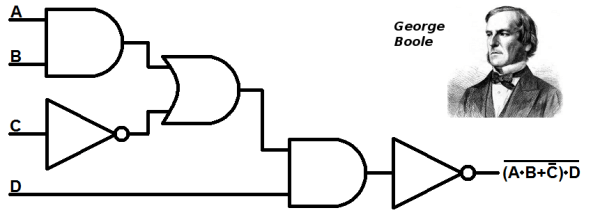World War I began in 1914 as a fight among several European nations, while the United States pursued a policy of non-intervention. In fact, Woodrow Wilson was reelected President largely because “He kept us out of war”. But as the war unfolded in Europe, an intercepted telegram sent by the German Foreign Secretary, Arthur Zimmermann, to the Mexican government inflamed the U.S. public opinion and was one of the main reasons for the entry of the U.S. into WWI. This is the story of the encrypted telegram that changed the last century.
Author: Manuel Rodriguez-Achach32 Articles
Will Supercapacitors Ever Replace Batteries?
Recharging your mobile phone or your electric vehicle in a few minutes sure sounds appealing. Supercapacitor technology has the potential to deliver that kind of performance that batteries currently can’t, and while batteries are constantly improving, the pace of development is not very fast. Just remember your old Nokia mobile with Ni-Cad batteries and several days of usage before a recharge was needed. Today we have Lithium-Ion batteries and we have to charge our phones every single day. A better energy storage option is clearly needed, and supercapacitors seem to be the only technology that is close to replace the battery.
Continue reading “Will Supercapacitors Ever Replace Batteries?”
Cordless Drill Uses No Electricity
There are few projects on how to make your own cordless drill, but what sets [Johnnyq90’s] amazing project apart is the fact that his power plant is a nitro engine. Not an easy task of course, but he makes it look easier than it is, and we really enjoyed the construction process.
He uses an RC Kyosho GX12 engine that was previously modified, changing the cooling head with a larger one. The engine drives a gearbox that was taken from another drill. All other parts were hand made. The clutch was carefully machined, and the cooling fan was made in a 3D printer. Other necessary parts were the frame, brass spacers to adjust the engine height and alignment, throttle arm and handle. In the end even the gearbox had to be modified for higher speed. The finished drill sure looks and sounds terrific, and seems to be perfectly capable of doing its job.
As with other mechanical projects from [Johnnyq90], the video has good timing and attention to detail. His channel is definitely worth a visit, specially if you like turbines.
Pulsed Power And Its Applications
Pulsed power is a technology that consists in accumulating energy over some period of time, then releasing it very quickly. Since power equals energy (or work) divided by time, the idea is to emit a constant amount of energy in as short a time as possible. It will only last for a fraction of a second though, but that instantaneous power has very interesting applications. With this technology, power levels of more than 300 terawatts have been obtained. Is this technology for unlimited budgets, or is this in reach of the common hacker?
Consider for example discharging a capacitor. A large 450 V, 3300 uF electrolytic capacitor discharges in about 0.1 seconds (varies a lot depending on capacitor design). Since the energy stored in it is given by 1/2 CV², which gives 334 Joules of energy, the power delivered will be 3340 watts. In fact a popular hacker project is to build large capacitor banks. Once you have the bank, and a way to charge it, you can use it to power very interesting devices such as:

- Coilguns
- Railguns
- Washer launchers
- Coin shrinking
- Electromagnetic pulse generators
- Spot welding
- Airgap flash high speed photography
- or just to explode things out
Railguns in particular are subject to serious research. You may have read about the navy railgun, capable of reaching a muzzle speed of more than 4,600 mph (around Mach 6), more than any other explosive-powered gun. Power is provided by a 9-megajoule capacitor bank. The capacitors discharge on two conducting rails, generating an electromagnetic field that fires the projectile along the rails. The rail wear due to the tremendous pressures and currents, in the millions of amperes range, is still a problem to be solved.
A Portable Jacob´s Ladder
A Jacob´s ladder is a favorite project of high voltage enthusiasts. It makes a visually attractive and fun display of a high voltage electrical arc climbing a pair of electrodes. [Keystone Science] shows us how to make a Jacob´s ladder that runs on 9 V batteries.
The ladder itself is pretty easy to make. It is nothing more than a pair of stiff wires in a V shape, connected to a high voltage power supply. The more difficult part is the HV power supply. [Keystone Science] explains how to build one using a flyback transformer from an old CRT tv and a few other components. It is a pretty simple circuit and can be powered by a 9 V battery. The ladder works because, when HV is applied to the electrodes, an arc is established at the bottom, where they are nearest each other. The arc is at high temperature so the air rises, and the arc starts to climb the ladder. Since the electrodes are further away from each other as the arc rises, at a certain point the distance is too large to sustain the arc and the process repeats.
This is a nice weekend project if you want to try it. In case you don´t want to make your own HV power supply, you can try another ladder project that uses a commercial one.
Make Logic Gates Out Of (Almost) Anything
Logic gates are the bricks and mortar of digital electronics, implementing a logical operation on one or more binary inputs to produce a single output. These operations are what make all computations possible in every device you own, whether it is your cell phone, computer, gaming console etc. There are myriad ways of implementing logic gates; mechanically, electronically, virtually (think Minecraft), etc. Let’s take a look at what it takes to create some fun, out-of-the-ordinary gate implementations.
Continue reading “Make Logic Gates Out Of (Almost) Anything”
Thermoacoustic Engine Has Only One Moving Part
Modern internal combustion engines have around 500 parts, with many of them moving in concert with the piston. But have you seen an engine with only one moving part, out of four in total? In the thermoacoustic engine, the power piston is the only part in motion. [YTEngineer] has built a very simple prototype that works on power provided by a tealight.
His little engine, slightly larger than a cigarette lighter, is composed of a test tube that serves as the cylinder, a smaller tube, called the choke, that fits inside the test tube, the stack, which is nothing more than some steel wool, and the power piston. [YTEnginer] nicely explains how the engine works: basically a temperature difference is used to induce high-amplitude sound waves that create the piston’s back-and-forth movement. The engine can be easily converted to an electricity generator by adding a magnet to the piston and a coil surrounding it.
The thermoacoustic engine is a particular type of Stirling engine. They have been proposed as electricity generators for space travel using radioisotopes as the heat source, among other applications. You may be interested in the history of Stirling engines, or perhaps even build a simple one.
Continue reading “Thermoacoustic Engine Has Only One Moving Part”

















